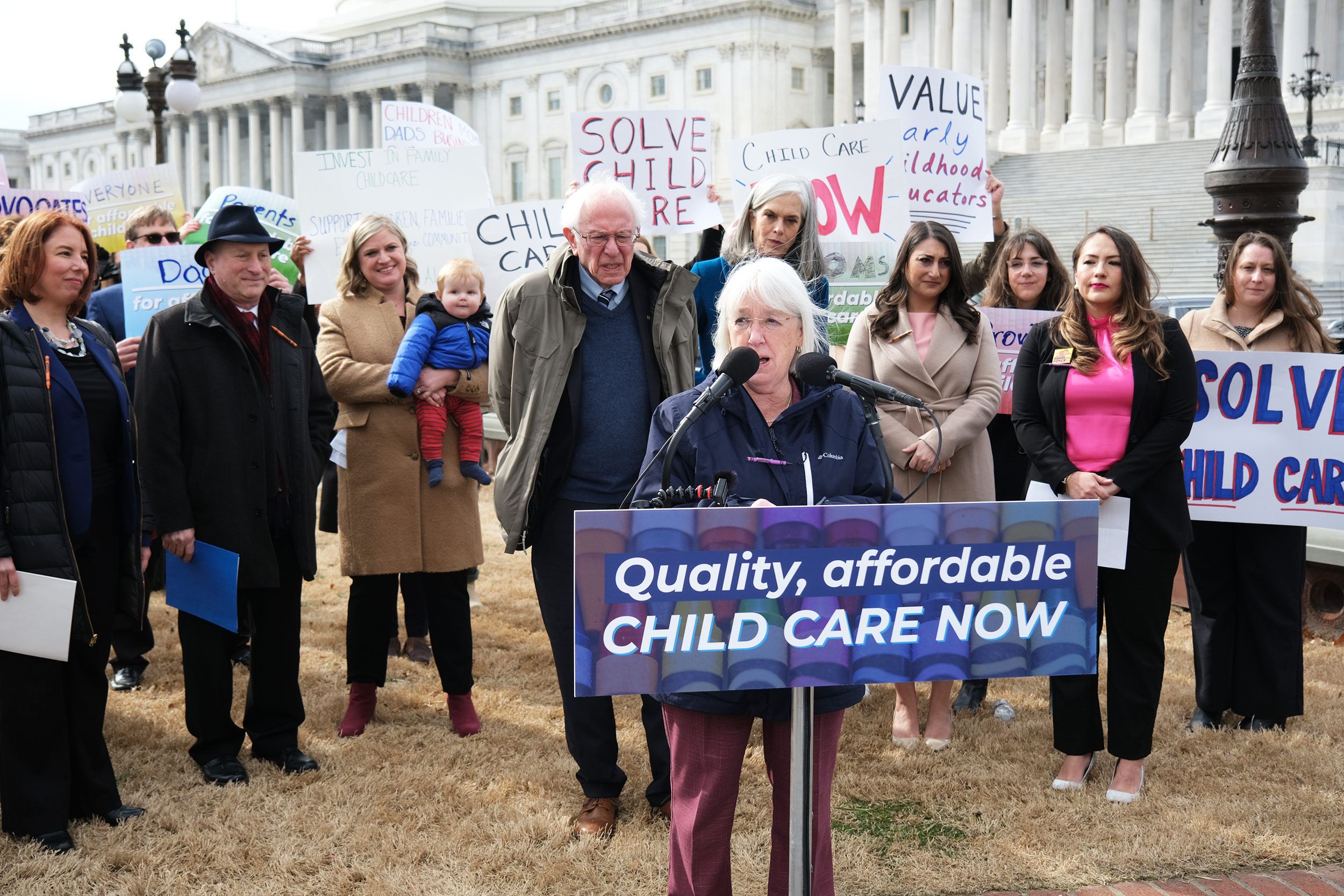Former Chair Murray and Chairman Sanders’ Report Finds the End of Critical Relief Funds Will Force Many Child Care Providers to Raise Tuition for Working Families, Reduce Wages for Workers, Serve Fewer Children, or Close Their Programs for Good
Washington DC – Ahead of a hearing tomorrow in the Senate Health, Education, Labor, and Pensions (HELP) Committee on child care funding, Senator Patty Murray (D-Wash.), a senior member and former chair of the committee, and Senator Bernie Sanders (I-Vt.), chairman of the committee, released a stunning nuevo reporte finding that if Congress fails to act before September 30, 2023, child care across the U.S. could become more expensive and more difficult to find.
The critical child care funding Democrats delivered in the American Rescue Plan saved the child care sector from collapse as the pandemic hit – saving high-quality child care slots for 10 million children nationwide and 1 million child care jobs. But the funding is set to expire on September 30th, putting access to affordable child care at risk. According to the report, once these funds run out:
- 1 in 5 child care programs say they will have to serve fewer children.
- 4 in 10 child care programs say they will be forced to raise tuition for working parents.
- 3 in 10 child care programs say they will be forced to cut wages or be unable to sustain any previous wage increases. This will be devastating for a sector that is already short 54,000 workers.
The report details for each state the number of child care programs that received these grants, the number of children impacted, and the amount of funds expiring by September 30th.
“Our nation’s child care sector was hanging on by a thread before the pandemic, and it was headed straight for collapse when COVID hit our country and providers prepared to close their doors for good. The historic federal investment in our nation’s child care sector that I fought tooth and nail to deliver saved the child care sector from collapse – keeping 220,000 providers’ doors open and saving child care slots for 10 million kids across our country,” Murray dijo. “But the funding we provided will expire this fall – which will likely force providers to lay off staff or shut down, force parents to leave work when they lose their child care, and take a wrecking ball to our economic recovery – unless we take action. Failing to invest in child care means failing to invest in our economy – it means worsening an already serious workforce shortage. This isn’t rocket science – businesses are struggling to hire the workers they need, parents need quality child care to get to work, child care workers need a living wage if we want them to take care of our children, and kids deserve a safe place to grow up and learn. I will not let up for one second until we finally fix the child care crisis in America.”
“We have a child care crisis in America that we have got to address,” Sanders said. “The American Rescue Plan provided critical funding that made child care available to millions of children and allowed child care programs throughout our country to stay open. If Congress does not act by September 30th to renew these funds, millions of working families with children will be at risk of losing the quality care that they need. We cannot allow that to happen. Not only do we need to renew these funds, we need to make sure that every child in America receives the high quality child care they deserve and that every child care worker in America makes a living wage. In the richest country in the history of the world, that is not a radical idea.”
The COVID-19 pandemic pushed the already fragile child care sector to the brink. During the pandemic, child care providers were the workforce behind the workforce – providing child care services for nurses, doctors, first responders, and so many other frontline workers. But child care programs consistently had to do more with less. Providers faced increased costs associated with keeping children and workers safe and healthy, while experiencing severe drops in revenue due to fewer families paying for child care during the pandemic. The nation stood to lose an estimated 4.5 million child care slots, and in June of 2020 fewer than 1 in 5 child care programs surveyed said that they expected their program could survive for longer than a year without significant financial help.
Congress provided over $52 billion in vital support to help stabilize the child care sector and help working families meet their child care needs during the pandemic through funding for the Child Care and Development Block Grant (CCDBG) and funding for Child Care Stabilization grants. According to the Department of Health and Human Services (HHS), Child Care Stabilization funds kept over 220,000 child care providers across the country afloat, sustaining child care for up to 10 million children. One third of child care providers who received a stabilization grant said their child care program would have closed permanently without the grants. States have used supplemental CCDBG funding to make child care more affordable for working families, to increase wages and support for child care workers, and to improve their child care subsidy systems.
Over $37 billion in funding for the child care sector runs out on September 30, 2023, which will leave workers, child care businesses, and working families with young children at risk without more child care funding to meet their ongoing needs, with states such as California, Florida, and Texas losing billions in funding. These historic investments in the chronically-starved child care sector provided a glimpse of what is possible with significant federal funding for child care – and must be maintained.
To read the full report, click aquí.
###


